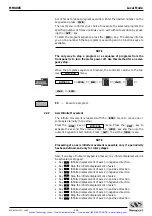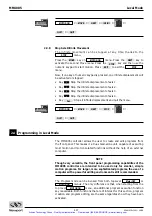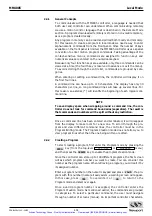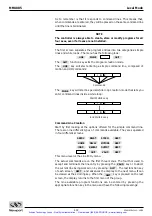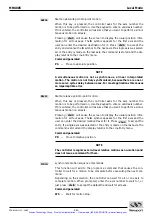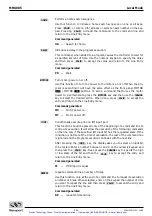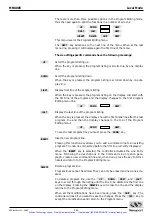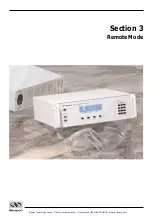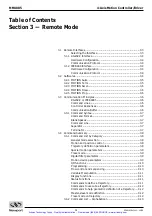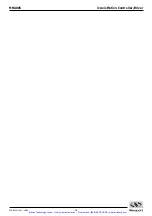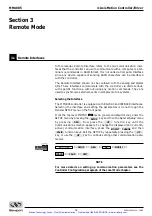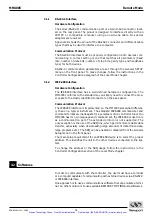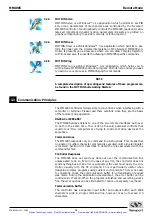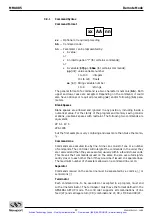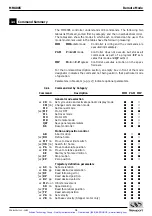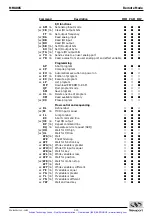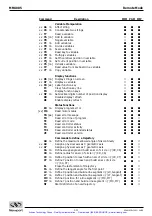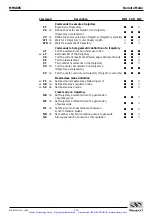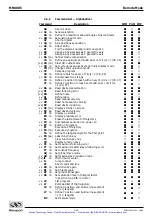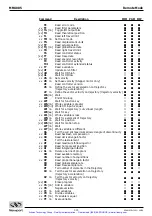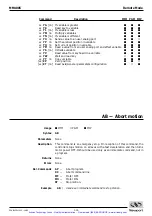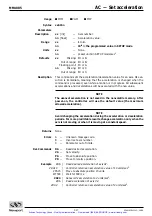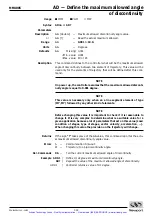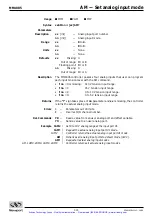
EDH0162En1040 – 06/99
3.4
MM4005
Remote Mode
3.1.1
RS-232-C Interface
3.1.1.1
Hardware Configuration
The serial (RS-232-C) communication port is a 9-pin D-Sub connector locat-
ed on the rear panel. The pinout is designed to interface directly with an
IBM PC or compatible computer, using a one-to-one cable. No special
adapters are required.
Appendix B shows the pinout of the RS-232-C connector and different cable
types that may be used to interface to a computer.
3.1.1.2
Communication Protocol
The RS-232-C interface must be properly configured on both devices com-
municating. A correct setting is one that matches all parameters (baud
rate, number of data bits, number of stop bits, parity type and handshake
type) for both devices.
RS-232-C communication parameters are set through the General SETUP
menu on the front panel. To make changes, follow the instructions in the
Controller Configuration paragraph of the Local Mode chapter.
3.1.2
IEEE-488 Interface
3.1.2.1
Hardware Configuration
The IEEE-488 interface has a well defined hardware configuration. The
MM4005 conforms to the standard so you simply need to connect the prop-
er cable to the clearly identified connector on the back panel.
3.1.2.2
Communication Protocol
The IEEE-488 interface is implemented on the MM4005 somewhat different-
ly than on a typical instrument. The standard IEEE-488 command set and
command format are inadequate for a complex motion controller. Since the
MM4005 has its own language and command set, the IEEE-488 is used only
as a communication port. The extended protocol is not supported. The
only exception is the use of the SRQ line, which permits more reliable data
transfer, especially when downloading large amounts of data (trace data,
large programs, etc.) The SRQ can be enabled or disabled from the General
Setup menu on the front panel.
The main setup requirement for an IEEE-488 device is to select the proper
address. This identifies the unit to the other devices connected to the sys-
tem.
To change the address or the SRQ usage, follow the instructions in the
Controller Configuration section of the Local Mode chapter.
Softwares
In order to communicate with the controller, the user must have a terminal
or a computer capable of communicating with external devices via a RS-232-C
or IEEE-488 interface.
One approach is to use a communications software that can emulate a termi-
nal. An other solution is to use available NEWPORT MOTION Suite softwares.
3.2
Artisan Technology Group - Quality Instrumentation ... Guaranteed | (888) 88-SOURCE | www.artisantg.com

